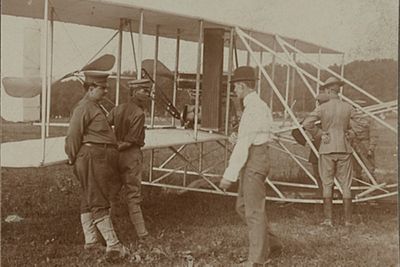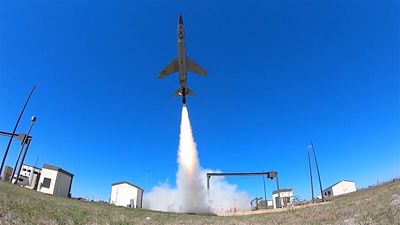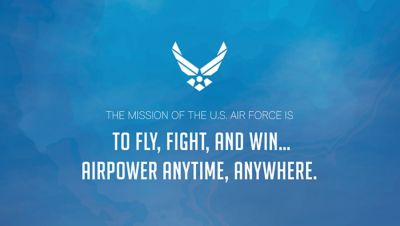-
United States -
United Kingdom -
India -
France -
Deutschland -
Italia -
日本 -
대한민국 -
中国 -
台灣
-
Ansys is committed to setting today's students up for success, by providing free simulation engineering software to students.
-
Ansys is committed to setting today's students up for success, by providing free simulation engineering software to students.
-
Ansys is committed to setting today's students up for success, by providing free simulation engineering software to students.
-
Contact Us -
Careers -
Students and Academic -
For United States and Canada
+1 844.462.6797
ANSYS BLOG
September 16, 2021
US Airforce Celebrates 74 Years of Innovation
The U.S. Air Force (USAF) was officially founded on September 18, 1947, but its roots stretch back to 1907. Just four years after the Wright brothers took their maiden flight, an Aeronautical Division was established in the Office of the Chief Signal Officer. Just a few months later, Brigadier General James Allen submitted the first request for a military aircraft. He wanted one that could fly at least 40 mph and carry two people. On its 74th birthday, let’s look at how the USAF has advanced the state of the art.
Speeding Toward Air Superiority
Beginning with the first military plane that was delivered in 1909 for $25,000 and earned a $5,000 bonus for exceeding the 40-mph target, speed has been seen as critical to air superiority. Engine, propeller, aerodynamic, and lightweight advancements followed, increasing the speed of aircraft, as well as their complexity. Notable early engineering-driven developments include rotary radial engines, controllable pitch propellers, turbosuperchargers, and liquid cooling.
The Wright brothers and some Army Signal Corps soldiers work on the Wright Military Flyer as they test it out at Fort Myer, Virginia, 1909. Photo: Library of Congress
Perhaps the biggest speed breakthrough, literally, was demonstrated by breaking the speed of sound. On October 14, 1947, Capt. Chuck Yeager piloted an experimental aircraft, the Bell Aircraft XS-1, through the sound barrier. Without simulation, the XS-1 team relied on a series of glides and powered test flights during development of the rocket plane before reaching Mach 1.06, which would set the stage for incredible jet propulsion advances and the engineering required to maintain those speeds.
The aerospace and defense (A&D) industry has been at the leading edge of the development and adoption of simulation technology since the introduction of computerized tools. The USAF relies on simulation to advance the state of the art – from mechanical assemblies and thermal analyses to electronics and now automation. To develop modern aircraft, engineers need to perform closed-loop simulations between sensors, control software, and intelligent algorithms. Multiphysics simulation are the only ways to test these systems to react to all possible situations in a reasonable timeframe.
Dive into our Aerospace & Defense webinar series to see how simulation technology is used by the A&D industry to design and analyze cutting-edge applications, and how simulation can help make these products better and safer.
The Skyborg autonomy core system launches aboard a Kratos UTAP-22 tactical unmanned vehicle at Tyndall Air Force Base, Florida, April 29, 2021. Termed Milestone 1 of the Autonomous Attritable Aircraft Experimentation, or AAAx, campaign, the ACS performed a series of foundational behaviors necessary to characterize safe system operation. Photo: U.S. Air Force
The New Speed Test
Today, speed is not just measured in Machs, but in bits per second and it reaches far beyond the aircraft. Modern USAF aircraft are engineering marvels that consist of complex electronic systems that are connected to systems on the ground, in the air, and in space to ensure successful missions. Digital mission engineering is the new speed breakthrough, enabling the A&D industry to deliver faster by bringing all the domains of the operational environment into every phase of the life cycle — engineering, testing, operations — using digital modeling, simulation, and analysis.
Check out our Microchip to the Mission webinar series for examples of how a pervasive physics-based simulation environment can predict operational outcomes much more effectively.
The USAF Looks to the Future
In April, the Air Force released its new mission statement: “To fly, fight, and win … airpower anytime, anywhere.” This change comes on the heels of the newest branch of the armed forces, the U.S. Space Force (USSF). Because the domain of space falls under the Space Force, the Air Force can now focus solely on airpower and maintain a sustained focus on core air domain missions, according to a recent press release.
“Delivering airpower for our nation requires more than just aircraft,” said Air Force Chief of Staff Gen. CQ Brown, Jr. “It requires Total Force Airmen – active duty, Guard, Reserve, civilians – in all Air Force specialties working together as a seamless team to operate, maintain and enable our mission and bring the unique capabilities and effects of airpower to bear.”
To see USAF technologies in person and how simulation and digital mission engineering helps to enable them, visit AGI, an Ansys company, at the Air, Space, and Cyber Conference September 20-22 in National Harbor, Maryland and at the Dubai AirShow in November.














